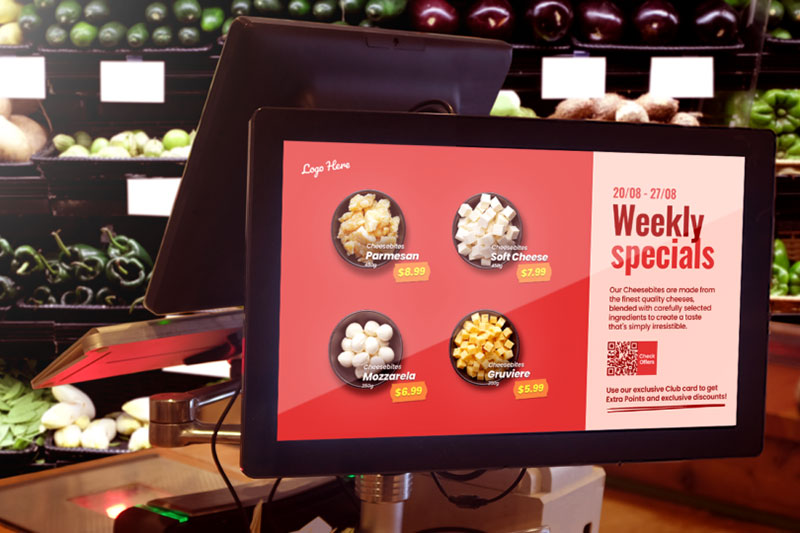
The thing about recent changes to the way industries do marketing is that unlike the pandemic (hopefully), they’re made to stay. As far as lockdown is concerned, demand for products and services have dropped across many industries, but groceries remain a necessity for consumers.
However, consumers are making fewer visits to grocers and taking measures to limit the contact they have with others, moving a considerable bulk of FMCG into the digital shopping space.
In light of this, how can marketers of fast moving consumer goods (FMCG) meet surging demand for FMCG online? The demand remains high for essential goods, but it has shifted. Marketers need to know how to capture new opportunities and leverage them.
Marketing online involves a particular set of challenges, which include:
- the need for brands to be more available and responsive online
- the scope of customer engagement across a variety of digital touchpoints and throughout the full marketing funnel
- brands having to reconfigure for nimbler and robust supply chains to withstand volatility.

1. The big shake-up in brand loyalty
Marketers have to rethink brand loyalty. The pandemic has shown that people are beginning to try new product brands at a much higher rate, and that includes private label brands as well. High-income and Gen Z consumers are leading the charge in this area, both in the US and in Asia Pacific. Gen Z shoppers are a lot more likely to make the switch compared to Gen X and Millennial shoppers.
While they still do pick popular brands that connect with them and allow them to express their individuality, it’s no surprise that online shopping has also influenced this trend of brand switching. This is especially true with regard to essential goods. Unstable economies push consumers to focus on what’s essential and in those categories, the top priority is value; convenience and availability are also crucial.
As such, it is imperative for FMCG marketers to see how they could start or continue providing good deals to their customers, as well as to study where consumers are turning their attention to in terms of brand selection. Only then could they properly assess how to redesign their logistics to meet their product availability demands and to optimize for speedy fulfilment.

2. Engaging yet hygiene-conscious marketing
The spread of COVID-19 is still a concern for many shoppers, and not an unreasonable one. Hence hygiene plays a big role in the purchase of food and groceries, particularly the use of self-checkout and other means for contactless delivery. Although not yet widespread, the use of autonomous drones to send essentials from online merchants to homes may grow to be a lot more prevalent, at least in the US and China.
This is not expected to be a temporary trend. According to a McKinsey report in 2020, close to 80 percent of consumers in the US intend to ramp up their use of self-checkout after the pandemic. Unsurprisingly, the biggest advocates of contactless purchase of essentials are Gen Z and Millennial consumers.
Technology can serve to help FMCG marketers design ways of engaging and sometimes captivating consumers, even when they aren’t frequenting stores. For instance, makeup brands aren’t able to allow people to test their products in-store, so they enable it through apps with virtual reality (VR) and augmented reality (AR) solutions instead.

3. Home is where the heart of shopping is
Throughout 2020, people who had been subject to lockdowns learned to embrace the homebody lifestyle. They had to learn how to make the most of their home lives, which involves home cooking. Juggling work and family needs often means that cooking becomes a chore, and in the FMCG space that translates to increased demand for easy meal preparation solutions and better ways of cooking for those who do love to cook.
Interestingly, this also applies to drinks, as people have increasingly taken post-work happy hours virtual. It’s therefore not unreasonable for marketers to expect growth in demand for pre-made cocktail kits.
The opportunity for marketing here lies in the growing prevalence of home-tainment, where a product or service that was usually engaged with outside is reimagined for the inside of homes. Pre-pandemic examples of it would be video games and Netflix; at present, think virtual concerts and museum tours, or yes, virtual happy hours. Because food and drinks are typically related to social activity, FMCG marketers for those categories can begin to frame their messages within this new context.
How brands can be ready to leverage these trends
Opportunities are null if brands aren’t adequately equipped to seize them. What do brands need to sort out within themselves to be ready? Here are two simple starting points to assess organizational readiness:
- Ensuring that digital and analytics initiatives are in tandem with organization-wide strategy, in order that innovations and insights generated are actually applicable to drive a brand in the direction of its long-term strategic goals.
- Being heavily invested in change management, because it makes little sense to access technology that cannot be implemented against a structure that isn’t made malleable. In other words, a brand has to first be adaptable in terms of its culture, personnel, and processes before technology can make it agile.
It is also important to bear in mind that there are changes to come in 2021 that would affect FMCG, which could again change the way brands approach their marketing for this year and all the ones to follow. Having said that, some trends are not expected to go away, such as the increased options for home-tainment, the upsurge of online shopping, and the increasing preference for contactless shopping of essentials.




